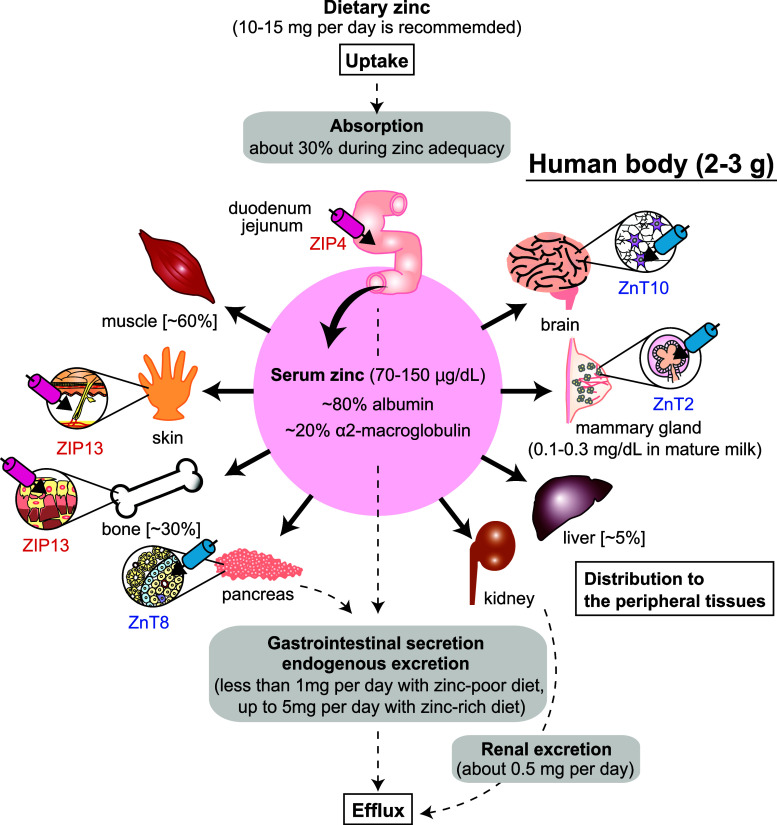Fig. 1.
Zinc distribution in the body. About 30 % of dietary zinc is absorbed mainly by duodenal and jejunal enterocytes in normal conditions [178]. Approximately 60 % of zinc is stored in skeletal muscle, about 30 % is in bones, and about 5 % is in liver and skin [1]. The remainder is distributed to other tissues such as brain, mammary gland, pancreas, and kidney. Only 0.1 % of total zinc circulates in the plasma bound to albumin and α2-macroglobulin. Zinc is egested primarily via gastrointestinal secretion and excretion, which depends on the zinc status [179]. Compared with gastrointestinal secretion and excretion, the urinary loss of zinc is minor [14]. Integument, another minor route of zinc excretion, is not shown. Zinc distribution in the body is elaborately controlled in the cellular and systemic levels through coordinated regulation, where ZIP and ZnT transporters play important roles. ZIP and ZnT transporters, whose mutations and SNPs are involved in inherited diseases or the increased risk of diseases, are shown in red and blue, respectively

